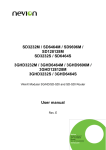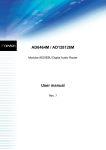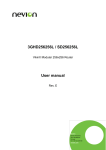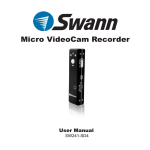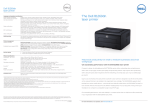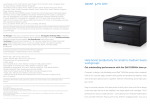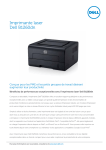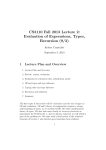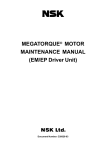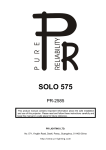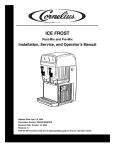Download A3232M / A6464M / A128128M A3232S / A6464S User manual
Transcript
A3232M / A6464M / A128128M A3232S / A6464S VikinX Modular Analog Audio Router User manual Rev. 10 Nevion Europe P.O. Box 1020, 3204 Sandefjord, Norway – Tel: +47 33 48 99 99 – Fax: +47 33 48 99 98 www.nevion.com Modular Analog Audio Router Rev. 10 Nevion Support Nevion Europe Nevion USA P.O. Box 1020 3204 Sandefjord, Norway Support phone 1: +47 33 48 99 97 Support phone 2: +47 90 60 99 99 1600 Emerson Avenue Oxnard, CA 93033, USA Toll free North America: (866) 515-0811 Outside North America: +1 (805) 247-8560 E-mail: [email protected] See http://www.nevion.com/support/ for service hours for customer support globally. Revision history Current revision of this document is the uppermost in the table below. Rev. 10 9 Repl. 9 8 Date 2011-01-26 2010-12-03 Sign NBS NBS 8 7 2008-06-13 NBS 7 6 2007-11-06 NBS 6 5 5 4 2007-10-26 2007-03-29 4 3 2 1 3 2 1 0 2006-02-09 2005-09-28 2005-04-22 NBS NBS NBS 0 - 2005-03-11 NBS Change description Added pictures in Chapters 3.5.1 and 3.5.2. New template; Added connection information, Chapter 5.2. Expanded description of how to configure Mono/Stereo router(s), Chapter 3.2.1. Added description of how to configure Mono/Stereo router(s), Chapter 3.2.1. New front page. Added Materials Declaration and EFUP; updated EC Declaration of Conformity. Updated product names and GYDA section Removed protocol and configuration details. Corrected RS-422 pinout description in Chapter 4.1. Corrected router size options and combined 9RU and 5RU frames. Initial Revision, based on VD/HD128M manual. nevion.com | 2 Modular Analog Audio Router Rev. 10 Contents 1 Product overview ..................................................................................................... 4 1.1 Product versions .............................................................................................................. 4 2 Specifications .......................................................................................................... 5 2.1 Mechanics ....................................................................................................................... 5 2.2 Power supply ................................................................................................................... 5 2.3 Control............................................................................................................................. 5 2.4 Signal specifications ........................................................................................................ 6 2.5 Rear view ........................................................................................................................ 7 3 Inside the Modular Analog Audio Router ................................................................. 9 3.1 How to access the modules ............................................................................................. 9 3.2 How to configure the router and modules ........................................................................ 9 3.3 Power supply module .....................................................................................................10 3.4 System controller - Multicon VX-MOD ...........................................................................12 3.5 X-point module ...............................................................................................................15 4 Router communication ........................................................................................... 21 5 Connecting signal cables to the router................................................................... 22 5.1 Unbalanced signals on the Modular Analog Audio Router ..............................................22 5.2 Connections depending on configuration ........................................................................22 6 Before calling Nevion Support ............................................................................... 27 7 Serial number overview ......................................................................................... 28 General environmental requirements for Nevion equipment..................................... 29 Product Warranty ...................................................................................................... 30 Appendix A Materials declaration and recycling information..................................... 31 EC Declaration of Conformity ................................................................................... 32 nevion.com | 3 Modular Analog Audio Router Rev. 10 1 Product overview The Modular Analog Audio Router is part of the VikinX Modular product range, offering up to 128x128 X-points for Analog Stereo Audio signals. This top of the line router provides a very compact frame, fully hot-swappable architecture, built-in dual redundant power supply and fully redundant controller functions. Starting with the size of 64x64 mono audio, or 32x32 stereo audio cross-points, the router can be expanded under operation with 64x64 increments. Advanced control features like TCP/IP interface and SNMP agent, as well as comprehensive surveillance of the router‟s vital parameters are possible via the well known GYDA-VX controller. As for our well known VikinX compact router series low power consumption has been important. VikinX Modular provides a fully hot-swappable architecture, meaning that all components are front loaded without any active components on the rear panel. VikinX Modular provides all important 3rd party control interfaces allowing the control of our routers through 3rd party management software. On top of that the Nevion‟s THOR management package allows control of the most common 3rd party routers. This enables you to utilize existing routers and management systems from other manufacturers and still draw the advantages of implementing VikinX Modular in your routing application. 1.1 Product versions The following versions of the VikinX Modular Stereo Analog Audio Router are available: Analog Stereo Audio router - 9RU: A3232M VikinX Modular router for Analog Stereo Audio, 9RU, equipped 32x32, expandable up to 128x128. A6464M As above, but equipped 64x64. A128128M As above, but fully equipped 128x128. Analog Stereo Audio router - 5RU: A3232S VikinX Modular router for Analog Stereo Audio, 5RU, equipped 32x32, expandable up to 64x64. A6464S As above, but fully equipped 64x64. nevion.com | 4 Modular Analog Audio Router Rev. 10 2 Specifications 2.1 Mechanics Dimensions: Backplane card: X-point Modules: System Controller: HxWxD = 396x483x340mm, (19”, 9RU), or HxWxD = 220x483x340mm, (19”, 5RU). 128x128 Analog Stereo Audio (9RU), or 64x64 Analog Stereo Audio (5RU). 64x64 mono, 32x32 stereo audio module cards. 1 Multicon VX-MOD1 card required, 1 redundant card is optional. 2.1.1 Emission/Immunity and Safety standards Emission/Immunity standards: Compliant with CE EN55103-1 and 2, FCC part 15. Safety standards: Compliant with CE EN60950, UL-1950/CSA22.2. 2.2 Power supply Built-in, redundant power supply. 1 module included, 1 (redundant) optional. Total power consumption: <300W. AC Supply voltage range: 90-130VAC / 180-254VAC, switchable, 50-60Hz, 300W. AC Mains connector: IEC 320, separate input for each PSU module. Alarms: Power failure alarm on relay contact closure, LED in front, and Open Collector to GYDA-VX. Alarms connector: RJ45. 2.3 Control Standard features: Audio control: Stereo audio Left-/Right channel controlled independently. Serial ports: RS-232/RS-422 for protocol conversion, to VikinX compact control protocol, or to third party protocols. (1x per Multicon VX-MOD1 card). Connector: DB9, female. Ethernet ports: 10/100BaseT Ethernet bus for external router control with new protocol. (1x per Multicon VX-MOD1 card). Connector: RJ45. Monitored parameters: - Module temperature. (via Multicon VX-MOD1) - Internal module voltages. Status surveillance: On each card with LED, and via system controller. Configuration storage: Removable compact flash card. Synchronization2 handled by Analog Black Burst, Looped. Both PAL and NTSC Multicon VX-MOD: supported. Tri-Level, Looped. For HD signal formats only. Connector: BNC. 1 Syscon may be applied instead of Multicon VX-MOD in older installations. Synchronization of an Analog audio router is not necessary, but an available feature for users who intend to switch this router synchronized to video, using video synchronization signals. 2 nevion.com | 5 Modular Analog Audio Router Rev. 10 Other features: - SNMP agent, included with Multicon3. Optional features: Redundant control: Redundant Matrix Control using 2x Multicon VX-MOD1. 2.4 Signal specifications Electrical signal inputs: Type: Connector: Impedance: CMRR: Max. level: Electrical signal outputs: Type: Connector: Impedance: CMRR: Max. level: Gain adj.: Performance: Frequency response: Adjacent crosstalk: Click noise: THD+N: SNR: 3 Balanced. DB25 female. > 10 kohm. > 60 dB. +23 dBu. Balanced. DB25 female. < 66 ohm. > 60 dB. +23 dBu. 1.0 dB (compensation for 600 ohm load). 20Hz-125kHz (-3dB) 20Hz-20kHz (± 0.3dB). > 100 dB, 20Hz-20kHz. < 50dBu. < 0.01%. > 90dB ref. to 0dB 20Hz-20kHz. GYDA-VX must be applied for SNMP agent if Syscon is used; only Multicon includes SNMP agent. nevion.com | 6 Modular Analog Audio Router Rev. 10 2.5 Rear view4 The following service connectors can be found on the rear of the Modular Analog Audio Router: 4 AC Mains A: AC mains power supply. AC Mains B: AC mains power supply (if redundant PSU is installed). Serial A1 and A2: RS-232 or RS-422 for external control protocols. Serial B1 and B2: RS-232 or RS-422 for external control protocols (if redundant Multicon VX-MOD is installed). Ethernet A: 10/100Base-T Ethernet bus for external router control. Ethernet B: 10/100Base-T Ethernet bus for external router control (if redundant Multicon VX-MOD is installed). The picture shows a 9RU frame. The 5RU misses the upper two connector boards. nevion.com | 7 Modular Analog Audio Router 5 Rev. 10 Serial GYDA A5: RS-232 or RS-422 for external connection to GYDA-VX (if GYDA-VX is installed). Serial GYDA B5: RS-232 or RS-422 for external connection to GYDA-VX (if redundant GYDA-VX is installed). Ethernet GYDA A5: 10/100Base-T Ethernet bus for external connection to GYDA-VX (if GYDA-VX is installed). Ethernet GYDA B5: 10/100Base-T Ethernet bus for external connection to GYDA-VX (if redundant GYDA-VX is installed). VIT 12: Synchronization signal 1 (in/out). Black burst/composite/tri-level sync reference input with passive loop-through for vertical interval switching. VIT 22: Synchronization signal 2 (in/out). Black burst/composite/tri-level sync reference input with passive loop-through for vertical interval switching. Power Alarm: Power fail alarm relay contacts. Separate contact pair for each PSU module that is installed. Contact closes on power failure. See Chapter 2.2 for further description. SW 1: Configuration switch 1 (not in use). SW 2: Configuration switch 2 (not in use). Not in use on routers controlled by Multicon VX-MOD. nevion.com | 8 Modular Analog Audio Router Rev. 10 3 Inside the Modular Analog Audio Router In order to get an overview of the parts that form the Modular Analog Audio Router this chapter will highlight some of the main components. 6 GYDA-VX (not shown in picture) Multicon VX-MOD Power supplies 7 Audio Modules 3.1 How to access the modules All active modules are accessible through the front of the router frame. If service or inspection is required, open the unit from the front. The door may be removed for easy access to the modules. An important feature of all the modules in the Modular Analog Audio Router frame is that they are all hot-swappable. The user does not have to turn off the power in order to remove/reinstall/replace a module with active components inside the Modular Analog Audio Router. When a board is hot-swapped and the reset button pushed, the router will restore the current setting within seconds. 3.2 How to configure the router and modules Setting up and configuring the router and its modules are done with the Nevion Configurator software. The Nevion Configurator is shipped with the router, or may be downloaded from www.nevion.com. For further instructions on router configuration, please see the online documentation in the Nevion Configurator. 6 7 GYDA-VX is not applicable in a frame controlled by Multicon VX-MOD. The picture shows a 9RU frame. The 5RU misses the upper two X-point Modules. nevion.com | 9 Modular Analog Audio Router Rev. 10 When the size of the router is changed by adding or removing of Main X-point modules and/or I/O X-point modules, the Nevion Configurator must be reconfigured to fit to the new router size. 3.2.1 How to configure mono/stereo routers You may configure a Modular router as either 32x32/64x64/128x128 Stereo, or 64x64/128x128 Mono, respectively. It is not possible to configure a 256x256 Mono from a 128x128 Stereo router. In order to configure an A6464M (or A6464S) Mono router to an A3232M (or A3232S) Stereo router, please follow this procedure: 1. 2. 3. 4. 5. 6. Open the Nevion Configurator; Select the Multicon VX-MOD that belongs to the router you want to reconfigure; Select Modular level setup; Select Show details; Select Add new; Change the name under “Description” to “Left channel” on the first one and to “Right channel” on the second one; 7. On “Left channel”, change the physical input to: “from 1 to 32” and physical output to: “from 1 to 32”; 8. On “Right channel”, change the physical input to: “from 33 to 64” and physical output to: “from 33 to 64”; 9. Select Apply; 10. Restart the router, and you have a 32x32 Stereo Analog Audio router, where the left channel in connected to I/O#1-32 on the lower backplane and the right channel is connected to I/O#33-64 on the same backplane. In order to configure an A3232S Stereo router to an A6464S Mono router, please follow this procedure: 1. 2. 3. 4. 5. 6. 7. Open the Nevion Configurator; Select the Multicon VX-MOD that belongs to the router you want to reconfigure; Select Modular level setup; Select Show details; Select Add new; Change the name under “Description” to e.g. “Mono channel” on the new one; On “Mono channel”, change the physical input to: “from 1 to 64” and physical output to: “from 1 to 64”; 8. Select Apply; 9. Restart the router, and you have a 64x64 Mono Analog Audio router. Please see Chapter 5.2 for wiring schemes related to router configuration and control. 3.3 Power supply module Each Modular Analog Audio Router frame comes with either one or two power supply modules. One power supply is standard, dual redundant power supply is an option. The first power supply module is inserted in the left slot (A), and the second is inserted in the right slot (B). nevion.com | 10 Modular Analog Audio Router Rev. 10 3.3.1 Module insertion In order to insert a power supply module one must insert the module via the special plastic guide rails into its position. Once the module is inserted, fix the module by lifting up the handle on the front and pushing it to the upright position. 3.3.2 Module removal In order to remove a power supply module, one must pull down the handle on the front downwards to a horizontal position, and pull the module out with the bar on top of the power module. 3.3.3 How to connect power to the Modular Analog Audio Router There are two power connectors on the back of the frame. Both of these connectors are for AC mains connection. Use an IEC 320 connector to connect AC mains to the Modular Analog Audio Router frame. There is a switch on the right hand side of the power supply module that selects mains voltage. The mains voltage can be either 110VAC or 230VAC. This switch must be set in the correct position, depending on the mains voltage on the router‟s site. Failing to select correct AC mains voltage properly may damage the Power Supply Unit. If the frame is equipped with a single power supply module, only one AC mains connection is used. However, if the frame is equipped with dual, redundant power supply modules, both AC mains connectors must be used, preferably from two different mains circuits. 3.3.4 Status LEDs and relay contacts There are 2 LEDs on the front of each power supply module, and they indicate the following: The upper, RED LED should be normally OFF. If it is ON, there is a power supply failure, indicating that the power supply module must be replaced. The lower, GREEN LED must be ON when mains power is connected. If this LED is OFF, it means that there is no mains power supplying the frame. There are also two Power fail alarm relay contacts on the rear side of the frame; see Chapter 2.2 for details. Each installed PSU module has a separate pair of contacts. The relay contact is normally open, and the contact closes on power failure. The PSU module A alarm is formed by contact between Pin 3 and Pin 6 (Green pair) The PSU module B alarm is formed by contact between Pin 1 and Pin 2 (Orange pair) nevion.com | 11 Modular Analog Audio Router Rev. 10 3.4 System controller - Multicon VX-MOD Each VikinX Modular frame comes with either one or two system controller cards, Multicon VX-MOD. One Multicon VX-MOD is necessary to control the router; dual redundant Multicon VX-MOD is an option. Please see separate Multicon VX-MOD manual for details about configuration and control. Multicon VX-MOD can be enabled for 3rd party control interfaces. Please contact your Nevion representative for details. Further, Multicon provides the user with an SNMP agent. Your Multicon VX-MOD card(s) may be inserted in any of the two slots (A) and (B). All the configuration parameters, control parameters, etc. are stored in the Compact Flash (CF) memory of the Multicon VX-MOD card. This provides a high grade of security for the user, as he just needs to remove the CF card if the Multicon VX-MOD card fails, and install this CF card on a new Multicon VX-MOD card. The router will not notice the difference. 3.4.1 Card insertion The frame is equipped with plastic guide rails to align the Multicon VX-MOD cards into their respective positions. Slide the card into the plastic guide rails inside the frame until the red handle is close to the frame front. A detailed description of the last part of the insertion process is shown in the figure below. On the top of the card tray, there is a hole above each module slot. When the tip of the handle is just below this hole, start to push the handle downwards as in the figure. The tip of the handle enters the hole and the card is locked and proper contact ensured when the handle is in downright position. Do not use excessive force; the card should enter easily – proper insertion is almost effortless. 3.4.2 Card removal To remove a module card from the sub-rack frame, release the card by moving the red handle until it is in horizontal position, as shown in the figure below. Then pull the card out of the sub-rack with the red handle. nevion.com | 12 Modular Analog Audio Router Rev. 10 3.4.3 Status LEDs and reset button There are 4 LEDs on the front side of the Multicon VX-MOD card, and a reset button on the rear side. Status LEDs The LEDs indicate the following: Diode Red LED Status Card error. Eth Warn Load Not applicable. Yellow LED Green LED Not applicable. Overall status of the card is OK Full duplex connection. Half duplex connection. Abnormal situation: no Not applicable. functional error, but a situation that requires attention. 8 High load on the Medium load on the μController. μController. May occur during system start up and software reconfigurations / upgrades. Normal situation. No light Card has no power, or is not inserted correctly. No Ethernet link established; check cable. Not applicable. Low or normal load on Not applicable. the μController. 8 Red LED means 100% load on the Multicon. This may occur for intervals up to approximately 20 seconds. Longer periods may indicate that there is something wrong with the Multicon. nevion.com | 13 Modular Analog Audio Router Rev. 10 Reset button The reset button on the rear side is used to perform a hard reset of the card. Do not perform a hard reset, unless the situation demands this. By performing a hard reset, the user looses control of the router, and will not get control of the router until approximately 20 seconds after releasing the reset button. 3.4.4 CF-card and battery All the information regarding the router configuration, as well as information regarding control panels that are connected to the router, is stored in the Compact Flash card on the Multicon VX-MOD card. If it is necessary to remove and/or insert a CF card, the following must be done: 1. Remove the Multicon VX-MOD card from its slot, according to the description earlier in this manual. 2. Slide the CF card out of its socket, and insert the new CF card into the socket. 3. Insert the Multicon VX-MOD card into its slot, according to the description earlier in this manual. If it is necessary to remove and/or insert a battery, the following must be done: 1. Remove the Multicon VX-MOD card from its slot, according to the description earlier in this manual. 2. Slide the battery out of its socket, and insert the new battery into the socket. nevion.com | 14 Modular Analog Audio Router Rev. 10 3. Insert the Multicon VX-MOD card into its slot, according to the description earlier in this manual. 3.5 X-point module Each VikinX Modular frame must be equipped with at least one X-point card, in order to work as a router. A maximum of four X-point cards can be inserted into the 9RU frame, providing router sizes from 32x32 stereo audio, via 64x64 stereo audio, up to 128x128 stereo audio. A maximum of two X-point cards can be inserted into the 5RU frame, providing router sizes of either 32x32 stereo audio or 64x64 stereo audio. The X-point cards are inserted from the lower card tray (I/O#1-32/64), up to the upper card tray (I/O#97-128 or I/O#33-64). 3.5.1 Card insertion To insert an X-point card, slide the module along the plastic guide rails into its position. On both sides of the card tray there is a hole next to each module slot. Use the two handles, which are located on the front of the module to seat the module. When the tip of both handles is just next to these holes, start to push the handles simultaneously inwards the card. nevion.com | 15 Modular Analog Audio Router Rev. 10 The tip of the handles enters the hole and the card is locked and proper contact ensured when you hear a click from both handles. Note that it may be necessary to press hard when inserting the X-point card(s). Be sure to press the card(s) firmly into the frame, before locking the handles. 3.5.2 Card removal To remove an X-point card from the frame, release the card by pushing the red knobs on each handle until each handle releases from its locked position. nevion.com | 16 Modular Analog Audio Router Rev. 10 Then pull both handles simultaneously, and pull the card out of the frame. 3.5.3 Status LEDs There are 9 LEDs on the front of each Analog Audio X-point card: They indicate the following: Diode Red LED Green LED Blinks when the μController is running (heartbeat). BEAT SYST.ERR A fault is detected on the card. The system controller lights, or turns off this LED. This is used for simplifying the identification of a module. SER.CH2 Blinks each time the μController of the X-point card answers a message from the system controller on communication channel 2. SER.CH1 Blinks each time the μController of the X-point card answers a message from the system controller on communication channel 1. TEST No special function; for internal testing purpose only. nevion.com | 17 Modular Analog Audio Router Diode Rev. 10 Red LED Green LED FAN 2 Fan error, when the fan speed is outside its normal range. FAN2 is the innermost fan on the X-point card. The fan speed of FAN2 is in its normal range. FAN2 is the innermost fan on the X-point card. PWR Any of the voltages on the card is outside their legal range. All internal voltages are OK. TEMP The temperature of the card is outside its legal range. The temperature of the card is OK. FAN1 Fan error, when the fan speed is outside its normal range. FAN1 is the outermost fan on the X-point card. The fan speed of the first fan is in its normal range. FAN1 is the outermost fan on the X-point card. Note that all alarm ranges are configurable from the system controller. 3.5.4 Service switches and reset button There are two slide-switches and one push-button switch on the card, as shown in the figure below. Reset button Service switches The push-button switch is the RESET switch. When this button is pushed and released, the μController of the X-point card resets and restarts its operation with its default settings, or the settings stored in EEPROM. The slide switch closest to the front of the X-point card (SW2): This switch must always stay in the right position, as seen from the card front. The switch is for factory use only. The slide switch furthest from the front of the X-point card (SW4): This switch must always be in the left position, as seen from the card front. The switch is for factory use only. 3.5.5 Gain compensation switches There are 64 Dipswitches (16 blocks with 4 switches each) on the left side of the X-point card, as shown in the figure below. The switches are numbered as shown in the table next to the figure (seen from the front of the card). These switches are applied to set gain compensation when using 600 Ohms load on respective outputs. Set the Dipswitch to ON (direction towards the card front) in order to increase the level of the associated router output, to compensate for a 600 Ohms load on respective output. Default setting is OFF (direction away from the card front). nevion.com | 18 Modular Analog Audio Router Rev. 10 The rows and columns of the table below have the following meaning: Card positions are numbered from the lowest position in the frame (#1), to the uppermost position in the frame (#4). Output # is the physical output from the router. Switch # are numbered as follows: Dipswitch #1 is the rightmost switch on each block; switch #4 is the leftmost switch. Card position: 1 Card position: 2 & 4 Card position: 3 Output # Switch # Output # Switch # Output # Switch # 1 SW181-2 65 SW261-2 1 SW261-2 2 SW161-1 66 SW241-1 2 SW241-1 3 SW181-1 67 SW261-1 3 SW261-1 4 SW181-3 68 SW261-3 4 SW261-3 5 SW161-4 69 SW241-4 5 SW241-4 6 SW181-4 70 SW261-4 6 SW261-4 7 SW161-2 71 SW241-2 7 SW241-2 8 SW161-3 72 SW241-3 8 SW241-3 9 SW101-2 73 SW301-2 9 SW301-2 10 SW81-1 74 SW281-1 10 SW281-1 11 SW101-1 75 SW301-1 11 SW301-1 12 SW101-3 76 SW301-3 12 SW301-3 13 SW81-4 77 SW281-4 13 SW281-4 14 SW101-4 78 SW301-4 14 SW301-4 15 SW81-2 79 SW281-2 15 SW281-2 16 SW81-3 80 SW281-3 16 SW281-3 17 SW21-2 81 SW21-2 17 SW21-2 18 SW1-1 82 SW1-1 18 SW1-1 19 SW21-1 83 SW21-1 19 SW21-1 20 SW21-3 84 SW21-3 20 SW21-3 21 SW1-4 85 SW1-4 21 SW1-4 22 SW21-4 86 SW21-4 22 SW21-4 23 SW1-2 87 SW1-2 23 SW1-2 24 SW1-3 88 SW1-3 24 SW1-3 25 SW221-2 89 SW221-2 25 SW221-2 26 SW201-1 90 SW201-1 26 SW201-1 27 SW221-1 91 SW221-1 27 SW221-1 nevion.com | 19 Modular Analog Audio Router Card position: 1 Rev. 10 Card position: 2 & 4 Card position: 3 Output # Switch # Output # Switch # Output # Switch # 28 SW221-3 92 SW221-3 28 SW221-3 29 SW201-4 93 SW201-4 29 SW201-4 30 SW221-4 94 SW221-4 30 SW221-4 31 SW201-2 95 SW201-2 31 SW201-2 32 SW201-3 96 SW201-3 32 SW201-3 33 SW141-2 97 SW181-2 33 SW181-2 34 SW121-1 98 SW161-1 34 SW161-1 35 SW141-1 99 SW181-1 35 SW181-1 36 SW141-3 100 SW181-3 36 SW181-3 37 SW121-4 101 SW161-4 37 SW161-4 38 SW141-4 102 SW181-4 38 SW181-4 39 SW121-2 103 SW161-2 39 SW161-2 40 SW121-3 104 SW161-3 40 SW161-3 41 SW61-2 105 SW141-2 41 SW141-2 42 SW41-1 106 SW121-1 42 SW121-1 43 SW61-1 107 SW141-1 43 SW141-1 44 SW61-3 108 SW141-3 44 SW141-3 45 SW41-4 109 SW121-4 45 SW121-4 46 SW61-4 110 SW141-4 46 SW141-4 47 SW41-2 111 SW121-2 47 SW121-2 48 SW41-3 112 SW121-3 48 SW121-3 49 SW261-2 113 SW101-2 49 SW101-2 50 SW241-1 114 SW81-1 50 SW81-1 51 SW261-1 115 SW101-1 51 SW101-1 52 SW261-3 116 SW101-3 52 SW101-3 53 SW241-4 117 SW81-4 53 SW81-4 54 SW261-4 118 SW101-4 54 SW101-4 55 SW241-2 119 SW81-2 55 SW81-2 56 SW241-3 120 SW81-3 56 SW81-3 57 SW301-2 121 SW61-2 57 SW61-2 58 SW281-1 122 SW41-1 58 SW41-1 59 SW301-1 123 SW61-1 59 SW61-1 60 SW301-3 124 SW61-3 60 SW61-3 61 SW281-4 125 SW41-4 61 SW41-4 62 SW301-4 126 SW61-4 62 SW61-4 63 SW281-2 127 SW41-2 63 SW41-2 64 SW281-3 128 SW41-3 64 SW41-3 Example: When output #57 of the card in position #1 (lowest in frame) is connected to a 600 Ohms load, you must set gain compensation on this output. This is done by setting Dipswitch #2 of SW301 in position ON (towards the card front). SW301 is the lower, rightmost dipswitch block in the group of dipswitches. nevion.com | 20 Modular Analog Audio Router Rev. 10 4 Router communication You gain access to router for communication purposes by connecting either the router‟s serial port to your computer and/or by using an Ethernet connection. Please refer to the manual for Multicon VX-MOD for a detailed description of the applicable communication interfaces for your modular router. nevion.com | 21 Modular Analog Audio Router Rev. 10 5 Connecting signal cables to the router Below you will find our standard pin-out for DB25 audio contacts. This pin-out is used for both Analog and digital audio routers. The same standard is used by Tascam and Fostex. DB25 Pin # Hot (+) Cold (-) GND 1 24 12 25 2 10 23 11 3 21 9 22 4 7 20 8 5 18 6 19 6 4 17 5 7 15 3 16 8 1 14 2 All audio contacts used on the routers are female type. Channel # 5.1 Unbalanced signals on the Modular Analog Audio Router If you want to use the Modular Analog Audio Router with unbalanced audio signals you connect these signals according to the following table: VikinX device „+‟ „-‟ „GND‟ Unbalanced signal connection Audio Shield Shield 5.2 Connections depending on configuration The way to connect your signal cables depends on the chosen configuration and the router controller that is applied. Every possible configuration is described below with its appropriate connection scheme. Do not connect your signal wires according to the text/numbering on the rear of the router. Your actual application determines the appropriate wiring, and is illustrated below. 5.2.1 Controller independent configurations The following wiring schemes are independent on the chosen router controller. Changing controller from Syscon to Multicon VX-MOD will not change the wiring scheme. nevion.com | 22 Modular Analog Audio Router Rev. 10 5.2.1.1 A128128M configured as 128x128 Stereo 5.2.1.2 A128128M configured as 2x 128x128 Mono 5.2.1.3 A6464M configured as 64x64 Stereo nevion.com | 23 Modular Analog Audio Router Rev. 10 5.2.1.4 A6464M configured as 128x128 Mono 5.2.1.5 A3232M configured as 32x32 Stereo 5.2.1.6 A3232M configured as 64x64 Mono nevion.com | 24 Modular Analog Audio Router Rev. 10 5.2.1.7 A6464S configured as 128x128 Mono 5.2.1.8 A3232S configured as 32x32 Stereo 5.2.1.9 A3232S configured as 64x64 Mono 5.2.2 Multicon control The following wiring schemes are representing configurations managed by Multicon VX-MOD. If the controller is changed, or updated from Syscon to Multicon, one must also change the wiring scheme accordingly. 5.2.2.1 A6464S configured as 64x64 Stereo 5.2.3 Syscon control Below wiring schemes are specific to routers controlled by Syscon. nevion.com | 25 Modular Analog Audio Router Rev. 10 5.2.3.1 A6464S configured as 64x64 Stereo nevion.com | 26 Modular Analog Audio Router Rev. 10 6 Before calling Nevion Support The following table shows possible symptoms, and what to do in order to correct possible error sources. Every user should read this before calling Nevion Technical Support. Symptom What to do… The lower, GREEN LED on the Power Supply No mains or battery power supplying the is OFF. frame. Check that the power supply is connected properly. This includes check of all connected power cords, etc. The upper, RED LED on the Power Supply is There is a power supply failure, indicating that ON. the power supply module must be replaced. The Status LED on the Multicon card is RED. There is a card error, indicating that the Multicon VX-MOD card must be replaced. The Warn LED on the Multicon card is RED. An abnormal situation has occurred. See Chapter 3.4.3. If the router has redundant PSU modules, check that both modules are properly installed, and are working. If the router has redundant Multicon VX-MOD cards, check that both cards are properly inserted, and are working. The SYST.ERR. LED on one of the X-point A fault is detected on the X-point card. Check cards is RED. that it is properly connected. If it is properly connected, the X-point card needs replacement. A FAN LED on one of the X-point cards is The fan speed is outside its legal range, RED. indicating that service is necessary. The PWR. LED on one of the X-point cards is Any of the voltages on the card is outside its RED. legal range, indicating that service in necessary. The TEMP. LED on one of the X-point cards Any of the temperatures on the card is outside is RED. its legal range, indicating that service is necessary. nevion.com | 27 Modular Analog Audio Router Rev. 10 7 Serial number overview The following table shows the serial numbers of all parts of your Modular Analog Audio Router. Please refer to these numbers when contacting Nevion for product support. Device / Part Frame, including all static cards Power Supply Module #1 Power Supply Module #2, if included X-point Card #1 X-point Card #2, if included X-point Card #3, if included X-point Card #4, if included Multicon VX-MOD Card #1 Multicon VX-MOD Card #2, if included Syscon Card #19 Syscon Card #29, if included GYDA-VX Card #19, if included GYDA-VX Card #29, if included 9 Part / Serial number Only if Multicon is not applied. nevion.com | 28 Modular Analog Audio Router Rev. 10 General environmental requirements for Nevion equipment 1. 2. - The equipment will meet the guaranteed performance specification under the following environmental conditions: Operating room temperature range: 0°C to 45°C Operating relative humidity range: <95% (non-condensing) The equipment will operate without damage under the following environmental conditions: Temperature range: -10°C to 55°C Relative humidity range: <95% (non-condensing) nevion.com | 29 Modular Analog Audio Router Rev. 10 Product Warranty The warranty terms and conditions for the product(s) covered by this manual follow the General Sales Conditions by Nevion, which are available on the company web site: www.nevion.com nevion.com | 30 Modular Analog Audio Router Rev. 10 Appendix A Materials declaration and recycling information A.1 Materials declaration For product sold into China after 1st March 2007, we comply with the “Administrative Measure on the Control of Pollution by Electronic Information Products”. In the first stage of this legislation, content of six hazardous materials has to be declared. The table below shows the required information. Toxic or hazardous substances and elements 組成名稱 Part Name 鉛 汞 镉 六价铬 多溴联苯 多溴二苯醚 Lead Mercury Cadmium Hexavalent Polybrominated Polybrominated (Pb) (Hg) (Cd) Chromium biphenyls diphenyl ethers (Cr(VI)) (PBB) (PBDE) FR-128128-A / FR-6464-A O O O O O O XC-A-M3232 O O O O O O Multicon VX-MOD O O O O O O GYDA-VX (option) O O O O O O POWER-SM AC O O O O O O O: Indicates that this toxic or hazardous substance contained in all of the homogeneous materials for this part is below the limit requirement in SJ/T11363-2006. X: Indicates that this toxic or hazardous substance contained in at least one of the homogeneous materials used for this part is above the limit requirement in SJ/T11363-2006. Parts without any of the above mentioned hazardous substances are indicated by the product marking: A.2 Recycling information Nevion provides assistance to customers and recyclers through our web site http://www.nevion.com/. Please contact Nevion‟s Customer Support for assistance with recycling if this site does not show the information you require. Where it is not possible to return the product to Nevion or its agents for recycling, the following general information may be of assistance: Before attempting disassembly, ensure the product is completely disconnected from power and signal connections. All major parts are marked or labeled to show their material content. Depending on the date of manufacture, this product may contain lead in solder. Some circuit boards may contain battery-backed memory devices. nevion.com | 31 EC Declaration of Conformity MANUFACTURER AUTHORIZED REPRESENTATIVE (Established within the EEA) Nevion Europe AS P.O. Box 1020, 3204 Sandefjord, Norway Not applicable MODEL NUMBER(S) A3232M / A6464M / A128128M A3232S / A6464S DESCRIPTION Modular Analog Stereo Audio Router DIRECTIVES this equipment complies with Low voltage (EU Directive 2006/95/EC) EMC (EU Directive 2004/108/EC) RoHS (EU Directive 2002/95/EC) China RoHS10 WEEE (EU Directive 2002/96/EC) REACH HARMONISED STANDARDS applied in order to verify compliance with Directive(s) EN 55103-1:1996 EN 55103-2:1996 TEST REPORTS ISSUED BY Notified/Competent Body Report no: Nemko 42192 TECHNICAL CONSTRUCTION FILE NO Not applicable YEAR WHICH THE CE-MARK WAS AFFIXED 2005 TEST AUTHORIZED SIGNATORY MANUFACTURER AUTHORIZED REPRESENTATIVE (Established within EEA) Date of Issue 2007-03-27 Place of Issue Not applicable Name Thomas Øhrbom Position QA Director, Nevion Europe (authorized signature) Sandefjord, Norway Nevion Europe P.O. Box 1020, 3204 Sandefjord, Norway – Tel: +47 33 48 99 99 – Fax: +47 33 48 99 98 www.nevion.com

































